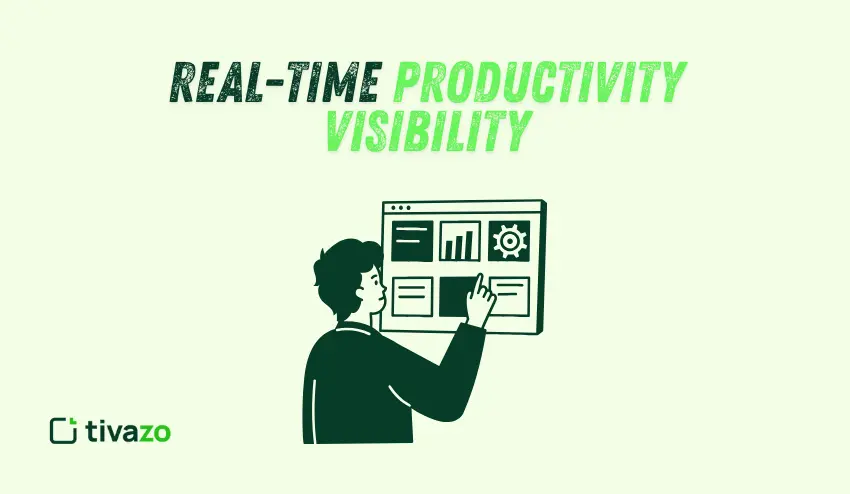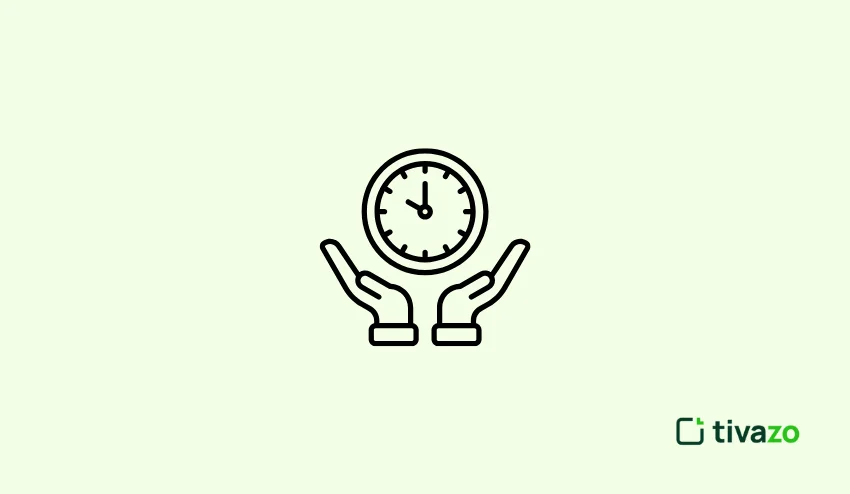Have you ever reached the end of a frantic workday, looked at your to-do list, and felt a sinking feeling? You were busy. Your calendar was a battlefield of back-to-back meetings, your inbox was overflowing, and Slack notifications were pinging relentlessly. You felt the rush, the motion, the effort. But when you look at what you actually accomplished, the needle on your most important projects barely moved. You’re left with the frustrating question: Where did all my time actually go?
Let’s be honest, we’ve all been there. This realization often sends us down searching for the best time management apps and productivity hacks. While these apps are incredibly powerful, they are not the solution in themselves; they are a diagnostic tool. The real transformation begins when you stop guessing where your time goes and start knowing.
Most importantly, tracking time isn’t about micromanaging every second; it’s about holding a mirror up to your day and finally seeing the truth. And that truth is the fuel that powers genuine productivity.
Key Highlights:
- Seeing Your Day with 20/20 Vision
- Find Your Golden Hours
- Break Free from the “Always-On” Trap
- Build a Sustainable System You’ll Stick With
- From Data to Decisions
Seeing Your Day with 20/20 Vision
You wouldn’t try to create a personal budget without first looking at your bank statements. It would be pure guesswork. Yet, we try to manage our most finite resource time based on feelings and assumptions. We feel like we spent all morning on that critical report, but did we?
This is where the practice of tracking time, often facilitated by the best time management apps on the market, acts as your impartial personal auditor. AI tools enhance productivity by automatically categorizing tasks, detecting patterns, and suggesting optimizations to eliminate time sinks and protect your golden hours. When you start logging your activities, you get an irrefutable, data-driven picture of your day.
You might discover that:
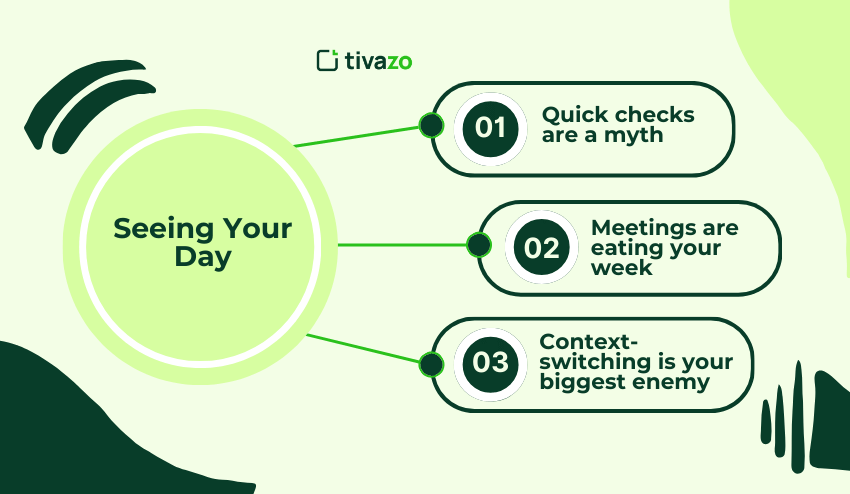
- Quick checks are a myth: Those 2-minute email checks you do 20 times a day add up to over an hour of fractured focus.
- Meetings are eating your week: You might find that 40% of your week is spent in meetings, many of which could have been a concise email or a shared document.
- Context-switching is your biggest enemy: The data will visually show you how often you jump between tasks. Seeing a log that reads “Report -> Email -> Slack -> Report -> Social Media -> Report” makes the cognitive cost of multitasking painfully clear. Every switch forces your brain to reload context, draining mental energy and destroying deep work.
This initial diagnosis is the most crucial step. You can’t fix a problem you can’t see. Before you can optimize, you must have an honest baseline. These apps simply provide that baseline without judgment.
Find Your Golden Hours and Slay Your Time Sinks
Once you’ve tracked your time through tracking time apps for a week or two, you move from diagnosis to action. This is where the magic happens and productivity increases.
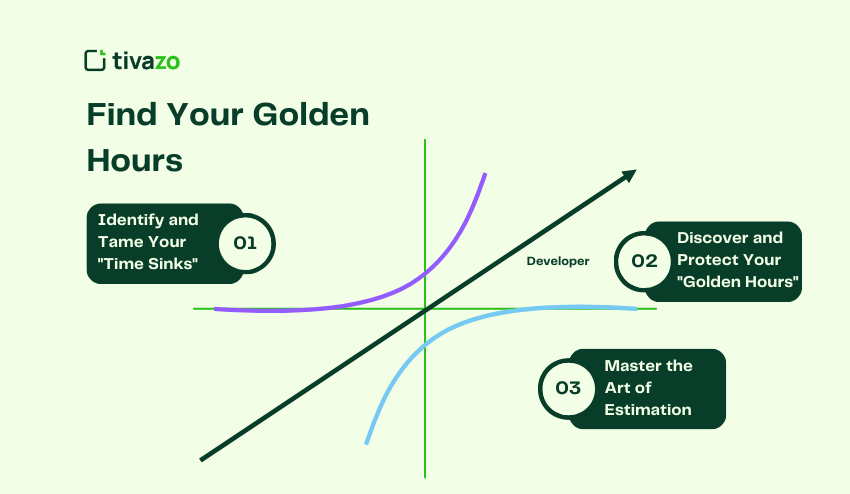
1. Identify and Tame Your “Time Sinks”
Your time log will immediately highlight the black holes where your time disappears with little to show for it. Is it endless scrolling on LinkedIn? Is it getting dragged into conversations that aren’t relevant to your goals? Is it a poorly defined administrative task that expands to fill whatever time you give it?
Once you see “3 hours spent on ‘miscellaneous admin'” in a report, you’re empowered to ask why. Can this be automated? Can it be delegated? Can it be time blocked into a single 30-minute block each day? By naming your time sinks, you take away their power. You can then implement strategies like time blocking (scheduling specific tasks into your calendar) to protect yourself from these distractions.
2. Discover and Protect Your “Golden Hours”
Honestly, you can only manage your energy and focus within time. Tracking time helps you understand your personal energy rhythms. By reviewing your logs, you’ll start to see patterns. Perhaps you’re a creative powerhouse between 9 AM and 11 AM, but your brain turns to mush after lunch. Maybe you get a second wind around 3 PM. These are your golden hours the periods when you have the most mental clarity and energy.
Now, what could be your actionable insight? Stop wasting your peak brainpower on clearing your inbox, declining meetings, and turning off notifications, and begin dedicating this time exclusively to your most important, high-cognition tasks. Use your low-energy periods for the shallow work: responding to emails, filing expenses, or planning your next day. This single shift of aligning your most important tasks with your peak energy levels can double your effective output.
3. Master the Art of Estimation
Parkinson’s Law famously states that work expands so as to fill the time available for its completion. If you give yourself all day to write a proposal, it will take all day. Tracking time is a powerful antidote to this.
When you consistently track how long tasks take, you get incredibly good at estimating how long they will take in the future. This transforms your planning from vague guesswork to a reliable system. You can confidently tell your manager, “That kind of report typically takes me four focused hours to complete,” and then block out that time. It also gamifies the process where you set an intention—“I will complete this in 90 minutes“—and the timer creates a positive pressure to stay focused and beat the clock.
Break Free from the “Always-On” Trap
Being busy is not the same as being productive. Tracking time shows you when you are reacting instead of creating swinging from one ping, alert, or interruption to another instead of creating value. Once you see this pattern clearly, you can set limits: silence notifications in focus blocks, establish blocks free from internal meetings, and communicating windows of availability to your team. Finding uninterrupted blocks of time brings back calm and clarity to your work.
Turn Insights into Better Workflows
Tracking time leads to awareness and then always to making structural changes. In your activity logs, you might decide that batching all email you read into 2 session each day is better than always answering on demand, or that you want to instead use software to automate the long list of admin activities you do repeatedly. As the months go by you learn and develop workflows that minimize friction and free up great energy for more valuable work.
Build a Sustainable System You’ll Stick With
Tracking time true power comes into play when it is not a one-time experiment, but a new habit. Remember, the focus is not perfection, but consistency. Disregard the thought of tracking in the second, and instead, concentrate on building small, repeatable behaviors, that make your time-tracking an automatic, habitual process.
A simple way to accomplish this is to build your tracking time in to rituals that fit naturally in your day:
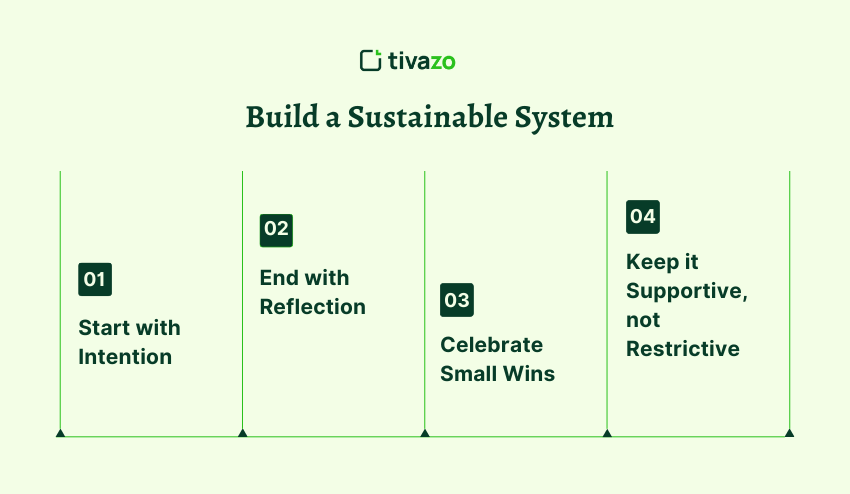
- Start with Intention: Track the first activity you begin when sitting down to work. It gives you a mark on the day, and reminds you to be intentional in the day.
- End with Reflection: Allocate 5–10 mins at the end of the day/week to consider the time you had actually spent with your time. You can look for patterns, surprises, and possible changes.
- Celebrate Small Wins: When you notice things are getting better less distraction, more time spent engaged in deep work acknowledge this small success. These small rewards build the habit.
- Keep it Supportive, not Restrictive: Treat the tracking time, not as something you must obey and follow, but as a guide for creating better days.
From Data to Decisions: Turning Tracking into Action
Tracking time is only part of the solution; acting on what the data tells you will be the action that really helps. Use insights from the data to reduce time spent on low-value work, make meetings more effective, plan deep work in your golden hours, or make more reasonable deadlines. When you take time to turn numbers into decisions, you stop responding to your day, and start designing it.
Making it a Habit, Not a Chore
The idea of tracking every minute can seem daunting, but it doesn’t have to be. Here’s how to start without feeling overwhelmed:
- Start Broad: Don’t try to log every break. Begin by tracking broad categories: “Project A,” “Team Meetings,” “Email/Comms,” and “Admin.” Get a feel for the big picture first.
- Be Honest: The system only works if you’re honest with yourself. If you spent 20 minutes on YouTube, log it as “Break” or “Personal Time.” This isn’t for your boss; it’s for your own self-improvement. There’s no shame, only data.
- Review Weekly: Set aside 15 minutes every Friday to look at your report. Ask yourself three simple questions: What surprised me? Where did I create the most value? What is one small change I can make next week to be more intentional?
Ultimately, tracking time is not about becoming a robot. It’s about becoming the architect of your own day. Time management is about being the captain, steering your focus and energy toward a destination you’ve chosen. It’s how you finally stop asking, Where did the day go? And start declaring, with confidence, I know exactly where my day went, and it was time well spent.
